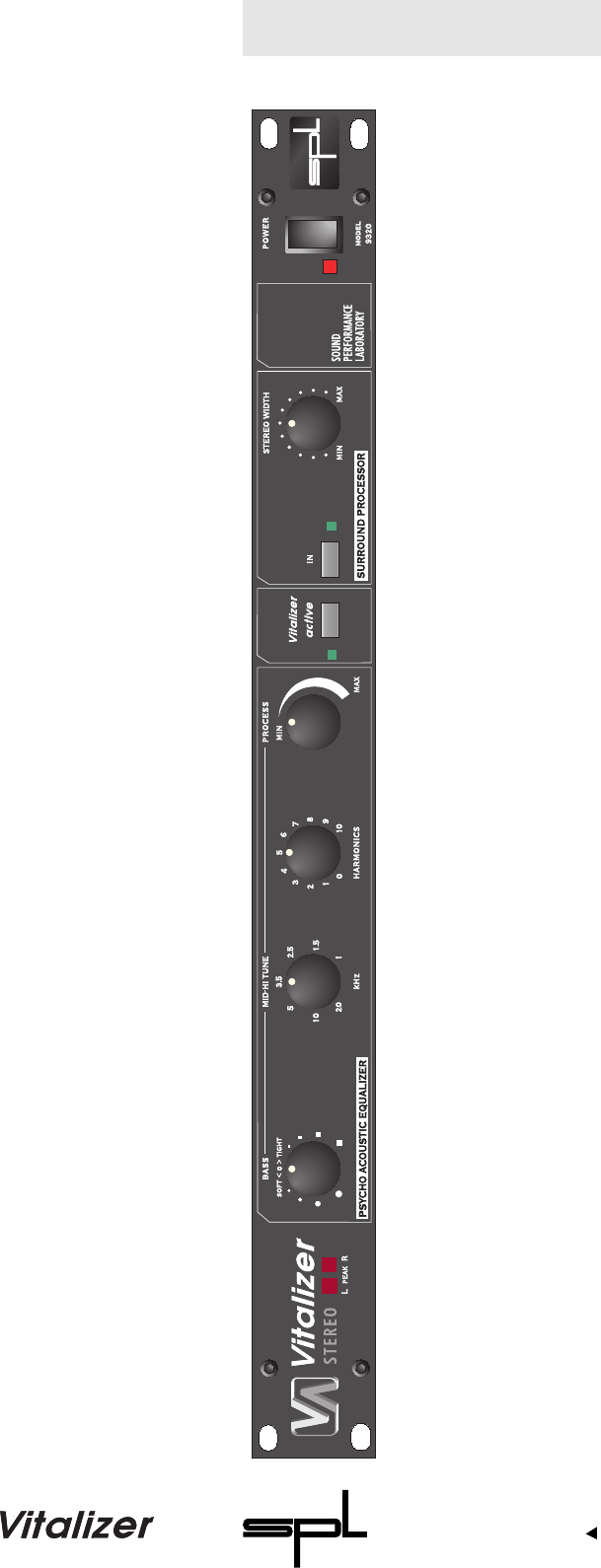
9
STEREO
When setting up the STEREO VITALIZER for the first time, it is wise to
approach the controls in a specific order to avoid confusion and to achieve
positive results right from the start. Use a CD as source.
Set-up positions:
-BASS to zero (center position)
- H
ARMONICS to MIN (counter clockwise)
- M
ID-HI TUNE to 3,5 kHz (center position)
-P
ROCESS to MIN (counter clockwise)
-S
TEREO EXPANDER to min (counter clockwise)
1. Press the ACTIVE switch. There is no audible change in the sound at
this stage.
2. Slowly move the PROCESS control in from the extreme left. You will
find that there is no audible change in the sound until the M
IN position (ca.
11 o'clock). That is just how it should be. All frequencies from 3.5 kHz
(initial setting M
ID-HI TUNE) are only raised with increasing intensity above
this point. First set the P
ROCESS control at 3 o'clock. The bass range is not yet
influenced at this point.
3. The next step is to shift the BASS control from the zero position to
both sides. Watch out for the differing bass sounds nuances.
Turn to the right: The bass sounds tight and dry.
Turn to the left: The bass sounds soft and round.
You should perform these hearing tests on appropriate »full-range«
monitors because near-field monitors normally cannot reproduce the deep
bass generated by the S
TEREO VITALIZER in its entirety. Decide on a bass
sound of the desired amplitude.
4. Now start varying MID-HI TUNE. The original setting is 3.5 kHz. Turn
to the right: The programme material sounds brighter and gets more mids
from about 1.5 kHz. The impression you hear is the reverse of the poten-
tiometer scaling: the lower the frequency, the brighter and clearer sounds
the programme material. This is because the M
ID-HI TUNE control sets a
starting frequency above which all frequencies are processed. If this star-
ting frequency is lowered, the frequency spectrum included in processing
increases. The programme material then sounds brighter and clearer.
Turning the control to the left shifts the starting frequency from 3.5 kHz
to higher frequencies. The programme material then sounds increasingly
dull, because fewer and fewer frequencies are being included in the
process, the higher the frequencies become. The setting you choose is a
matter of personal taste.
First steps


















